Master Pool Pump Maintenance: Keep Your Oasis Pristine
December 22th, 2024
December 22th, 2024
Under the blazing summer sun, a backyard pool transforms into a shimmering oasis, offering respite and relaxation. Yet, behind this idyllic scene lies a complex symphony of technology, orchestrated by the unsung hero of pool maintenance—the pool pump. This device, often tucked away, plays a critical role in ensuring that your aquatic retreat remains pristine and inviting.
The pool pump's primary function is to circulate water, moving it from pool to filter and back again. This constant motion is crucial because stagnant water is a breeding ground for algae and bacteria. Much like the heart pumps blood throughout the human body, the pool pump ensures a steady flow, maintaining the water's vitality. Growing up, I often watched my father carefully adjust our pool pump, ensuring each setting was just right. He'd explain how it wasn't just about moving water but about filtering debris and distributing chemicals evenly.
In essence, the pool pump is a vital player in a larger ecosystem. It works tirelessly to balance water chemistry, clear away unwanted particles, and keep your swimming experience as safe as it is enjoyable. This mechanical guardian allows you to focus on floating in tranquility, knowing that the inner workings are diligently preserving the purity of your pool.
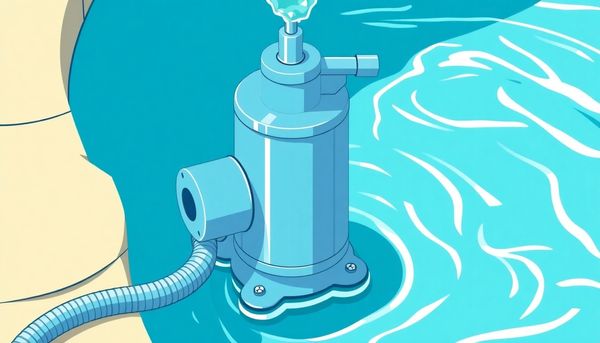
At the heart of your pool's pristine condition lies an unsung hero, tirelessly at work: the pool pump. This vital component operates much like the heart in our bodies, continuously circulating water through the pool's veins—the plumbing and filtration system. Without it, the pool would quickly become a stagnant, murky basin. The process begins with one or more valves controlling the water flow into the pump. These valves, akin to traffic signals, dictate the smoothness of water circulation, ensuring it journeys through the filter where debris and impurities are trapped.
The efficiency of a pool pump is often gauged by its turnover rate, a term that might sound technical but is essentially about ensuring every drop of water gets its fair share of filtering. For instance, in my childhood summers, our family pool was a sprawling oasis of 15,000 gallons. With a pump boasting a flow rate of 40 gallons per minute, it took just over six hours for the entire pool to be filtered—a routine as vital as morning coffee.
Yet, pumps, like any diligent worker, require occasional attention. Regularly inspecting the pump basket for debris or checking the lid seal for air leaks can prevent disruptions. If left unchecked, even small issues can lead to more significant problems, like air entering the system or the pump overheating. Maintaining these checks ensures your pump continues its role without a hitch, keeping your aquatic escape clear and inviting.
Water flow dynamics within a pool system offer an intriguing glimpse into the heart of aquatic maintenance. At the center of this operation is your pool pump, orchestrating a seamless ballet of currents that keeps the water pristine. The journey begins as water is drawn from the pool through a series of plumbing lines. These lines often converge at strategic points adorned with valves, allowing you to choreograph the movement of water—perhaps redirecting it from the main drain or skimmers, or halting it entirely for maintenance.
Diverse elements such as skimmers, drains, and return jets collaborate in this fluid symphony. Skimmers capture floating debris, while drains pull water from the pool's depths. The pump then propels the water through the filter, removing finer impurities. Once cleansed, the water circulates back into the pool through return jets, reintroducing it to the environment in a rejuvenated state. Each component is crucial, relying on the others to maintain balance and efficiency.
Reflecting on a recent experience, I discovered a blocked skimmer line causing uneven water flow. This minor hiccup underscored the importance of regular inspections and timely maintenance. Much like tuning an instrument, ensuring your pool pump and its components are in top shape guarantees a harmonious and effective water flow. By understanding these dynamics, you gain a deeper appreciation for the system that keeps your pool sparkling and inviting.
A pool pump, much like a diligent worker, never rests. Yet, there are times when it might falter, leaving you with the task of diagnosing its ailments. When the usual hum of your pool pump turns into a silent protest or a worrisome rattle, it's time to roll up your sleeves and troubleshoot.
Start with the basics: debris can be a stealthy saboteur. Leaves, bugs, or forgotten toys can sneak past the skimmer basket and clog the pump basket. Always switch off the pump before diving into this task, and clear out any wayward items to keep the water flowing smoothly.
Next on the checklist is the pump lid seal. An improperly sealed lid can invite air into the system, disrupting the water flow. Examine the O-ring for any signs of wear or damage. A layer of O-ring lubricant can often work wonders, but if cracks are visible, replacement is the best course.
Air leaks are another common culprit. Inspect all connections between the pump and plumbing lines for weakness. A simple application of plumber’s tape may fortify these links, ensuring a tight seal and preventing unwanted air intrusion.
Finally, keep an eye on the water level. A drop below the skimmer can lead to air intake, risking overheating. Regular checks and a watchful eye on the skimmer basket and filter will help maintain a harmonious pool environment. By addressing these common issues, you're not just fixing a pump—you're ensuring your pool remains a sparkling oasis.
Achieving an optimal turnover rate is akin to mastering the rhythm of a well-orchestrated symphony. Each pool possesses its distinct characteristics: size, shape, and volume, all influencing how swiftly and efficiently the water needs to circulate. Understanding this cadence is essential in preventing your pool from becoming a breeding ground for algae and bacteria.
Imagine a friend's pool, which seemed perpetually cloudy despite regular cleaning. The culprit? A sluggish turnover rate. To maintain clarity, the water must make a complete round through the filtration system at least once every 24 hours. This requires a pump with adequate power and efficiency.
Calculating your pool's turnover rate isn't just about crunching numbers; it's about ensuring a harmonious flow. For instance, a 20,000-gallon pool with a pump operating at 50 gallons per minute requires 400 minutes, or under seven hours, for a full turnover. This regular circulation not only helps in even dispersal of chemicals but also allows the filtration system to catch debris effectively.
Regular checks are vital. Clear pump baskets of debris, seal connections tightly to prevent air leaks, and ensure your skimmer line is free from obstructions. Each step contributes to maintaining the pump's health and your pool's pristine condition. By respecting the turnover rate, you set the stage for a sparkling pool that invites relaxation and enjoyment.
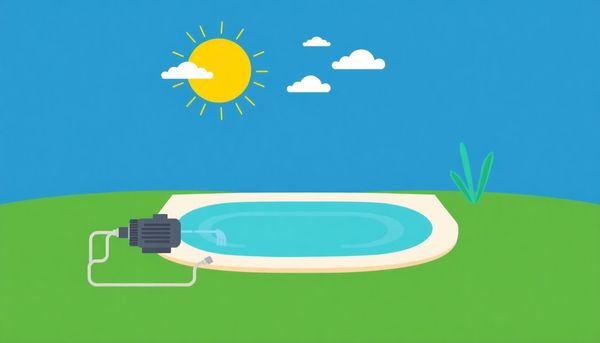
Water circulation in a pool is akin to the lifeblood flowing through a living organism. When the pump is humming along, your pool experiences a harmonious blend of movement and cleanliness. Imagine standing by the pool, hearing the gentle hum of your pump—a sound that assures you everything is operating smoothly. The pump draws water from the pool and pushes it through the filter, removing debris and impurities. This process not only keeps the water sparkling but also ensures that essential chemicals are evenly distributed, providing a safe environment for swimmers.
Consider your pool pump as the guardian of water health. It’s not just about keeping the water moving, but about ensuring every drop gets its fair share of filtration and sanitization. For instance, when my family installed a new pool, we noticed a dramatic difference in water clarity and freshness once we optimized our circulation. By adjusting the valves correctly and scheduling regular filter maintenance, the pump became more efficient, and our pool time became more enjoyable.
It's crucial to maintain a consistent turnover rate; the pump should circulate all of the pool's water at least once a day. This involves calculating the flow rate and ensuring the pump runs for a sufficient duration. Regular checks on your system—like inspecting the pump basket and ensuring a proper seal on the lid—help maintain optimal circulation and prevent costly repairs. Keep a keen eye, and your pool will thank you with crystal-clear water.
When your pool pump decides to take an unscheduled break, it's not just an inconvenience—it can quickly turn your oasis into a murky mess. Let me share some insights that have saved me more than once. First, the pump basket is often the culprit. Leaves and small debris have a knack for sneaking past the skimmer, clogging up the works. Make it a habit to check and empty the pump basket regularly, ensuring the pump is off to avoid any surprises.
Next up, the pump lid seal is more important than it might seem at first glance. Picture this: a tiny crack in the O-ring, and suddenly your system is wheezy, sucking in air instead of water. A dab of O-ring lubricant can work wonders, but if wear and tear have taken their toll, replacing the ring altogether can save you headaches down the line.
Let's not overlook the connections. I once spent an afternoon chasing an elusive air leak, only to find a loose union. Tightening these connections or adding plumber’s tape can often restore harmony. Also, keep an eye on your water level. If it's too low, the pump might start gasping for air, risking serious damage. Lastly, regular skimmer and filter maintenance can prevent your pump from working overtime. Trust me, a little preventive care goes a long way in keeping your pump humming happily.
In the world of pool maintenance, keeping your pump in peak condition is akin to ensuring your heart keeps beating steadily. Without it, the pool transforms from a refreshing oasis into a murky swamp. A friend once shared their harrowing tale of neglecting their pool pump. One day, they found their pool resembling a pond more suitable for frogs than family fun. This underlines the necessity of regular maintenance checks.
First and foremost, give attention to the pump basket. Leaves, stray toys, and other debris can accumulate, impeding water flow. It's this basket's job to catch larger debris before it jams the intricate workings of the pump. Regularly emptying this basket, with the pump turned off, is a straightforward task that pays dividends in longevity and efficiency.
Next, the pump lid seal demands respect. The O-ring, a simple yet vital component, can degrade over time. Cracks or a loss of elasticity allow air into the system, causing inefficiency. A specialized lubricant can extend its life, but replacement is wise if wear is evident.
Lastly, ensure all connections are tight and leak-free. Air leaks can cause the pump to run dry, risking overheating or permanent damage. Tightening connections with plumber's tape is a small but significant step in maintaining a robust system.
By prioritizing these checks, you safeguard not only your investment but also the joy of diving into crystal-clear waters on a hot summer day.
To unravel the mystery of how a pool pump maintains its efficiency, one must first delve into optimizing water flow paths. The journey water takes from pool to pump and back again is crucial for keeping the pool pristine. Consider for a moment the veins and arteries of the human body, constantly circulating blood to sustain life. Similarly, the pool's plumbing must ensure seamless water movement to prevent stagnation.
Effective water flow begins with the strategic positioning of inlet valves. These valves, akin to traffic directors, manage the influx of water into the pump. It’s not uncommon to encounter a three-way valve, which elegantly balances water intake from various sources like skimmers or main drains. Adjusting these valves can significantly impact how swiftly and efficiently water circulates through the system.
Once inside, the pump takes charge, propelling water through the filtration process. This stage is where the magic truly happens. Filters trap debris, ensuring that only clean water returns to the pool. But a well-optimized flow path does more than just clean; it aids in the even distribution of chemicals, maintaining the pool's delicate balance.
Regular maintenance, such as checking for clogs or debris in the skimmer and ensuring seals are airtight, is essential. These simple actions not only bolster the pump’s longevity but also enhance the water’s journey, turning a potential poolside nightmare into a well-orchestrated aquatic symphony. By understanding and optimizing these pathways, you keep your pool pump performing at its peak, guarding against the murkiness of uncirculated waters.
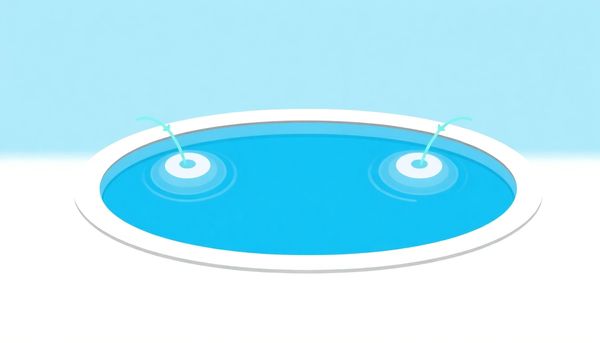
In the world of pool care, the pump is your trusty companion, tirelessly keeping your oasis fresh and inviting. However, like any hardworking machine, it may sometimes encounter hiccups. Addressing these issues promptly ensures your pool remains a sparkling retreat.
First, consider the heart of the matter: the pump basket. Leaves and debris often slip past the skimmer, finding their way into the basket. Regularly emptying this basket prevents clogs, allowing water to flow freely. It's a simple habit that makes a world of difference.
Next, the pump lid seal warrants attention. An unsealed lid permits air to infiltrate, disrupting your pump's efficiency. Inspect the O-ring for signs of wear. A cracked or brittle O-ring should be replaced, but a little lubricant can breathe new life into a slightly worn seal.
Connections are crucial. Check the joints between the pump and plumbing lines. Air leaks are often a result of loose fittings, so consider using plumber’s tape to secure these connections. Ensuring a snug fit keeps your system airtight and efficient.
Finally, never underestimate the power of a clean skimmer. A blocked skimmer line, perhaps due to an unnoticed toy or accessory, restricts water flow. Regularly clear the skimmer basket, and if pressure issues persist, it might be time to backwash or clean the filter.
By tackling these troubleshooting steps, you maintain the harmony of your pool system, ensuring your pump runs smoothly and your water stays pristine.
Every pool owner's worst nightmare involves their pool pump sputtering to a halt, especially when signs of an air leak emerge. It’s like trying to sip through a straw with a hole—frustrating and ineffective. The first tell-tale sign of an air leak is often a noisy pump. It may sound like it’s gasping for air, a clear indication that something is amiss. Listen closely; your pump might be trying to share its secrets with you.
Visual inspection is your next ally. Begin by scrutinizing the pump lid. A cracked or damaged O-ring can be the culprit, letting air sneak into your system. This tiny component wields surprising power over the entire operation; a simple swap could save headaches down the line. Applying a specialized lubricant can extend its life and improve the seal.
Don’t forget the connections. Loose joints are another frequent offender when it comes to air leaks. Checking the fittings and unions between the pump and plumbing can reveal gaps where air might enter. A roll of plumber's tape can work wonders to tighten these connections, creating a more airtight environment.
Lastly, consider the water level in your pool. If it’s too low, the skimmer can gulp air, leading to pump woes. Maintaining an optimal water level ensures your pump remains well-fed and functional. These proactive steps can safeguard your pump against air leaks, ensuring it continues to keep your pool pristine and inviting.
Your pool pump's ability to ensure proper water turnover is crucial to maintaining a pristine swimming environment. This turnover refers to the complete circulation of all the water in your pool through the filtration system. Achieving the right turnover rate means that your pump must be sized and operated correctly to filter all pool water at least once a day. Imagine it as the heartbeat of your pool—without a proper rhythm, everything else falls out of sync.
Consider a typical scenario: a 15,000-gallon pool paired with a pump that has a flow rate of 40 gallons per minute (GPM). In this case, you need a little over six hours to filter all the water. It's essential to run your pump long enough daily to avoid common issues like cloudy water or algae growth. Though running the pump for about 8 hours suffices for most pools, variables such as pool size, usage, and environmental factors may necessitate adjustments.
To ensure efficiency, regularly inspect and maintain your pump components. Clear any debris from the pump basket and verify that the pump lid is sealed correctly to prevent air leaks. As an extra precaution, frequently check the skimmer and filter for blockages. A well-maintained pump not only supports optimal turnover but also extends the life of your equipment, keeping your pool inviting and spotlessly clean.
Think of your pool pump as the lifeguard of your backyard oasis, tirelessly ensuring crystal-clear waters by circulating and filtering the pool’s contents. Central to this process is the meticulous care of the pump’s components, which can prevent many common pool problems. One might start by giving attention to the pump basket. Regularly emptying it of leaves, twigs, or any debris that sneaks past the skimmer ensures the pump maintains its optimal flow rate. This simple action, akin to brushing your teeth regularly, prevents clogging and extends the life of the pump.
Turning to the pump lid, imagine it as the seal on a vacuum container. Any crack or misalignment can introduce air, disrupting the pump's ability to function efficiently. It's wise to inspect the O-ring on the lid for wear and tear, lubricating it as needed or replacing it if it's beyond saving. This small step can prevent air from sneaking into the system, which could otherwise cause the pump to run dry and overheat.
Next, the connections between the pump and plumbing lines are worth checking. These joints can sometimes loosen, especially after periods of inactivity, leading to unwanted air leaks similar to a leaky faucet. Tightening these connections and using plumber’s tape can safeguard against such inefficiencies.
Lastly, keeping an eye on the water flow through the skimmer and filter is crucial. Regularly cleaning the skimmer basket and backwashing the filter can alleviate pressure build-up, allowing your pump to work effortlessly. By tending to these components with care, you ensure that your pool pump remains the steadfast guardian of your aquatic sanctuary.
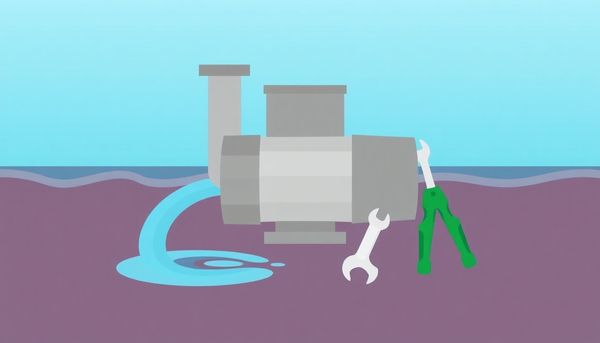
A pool's vitality depends heavily on maintaining the correct turnover rate, a crucial aspect often overlooked by pool owners. The turnover rate is essentially the time it takes for your pump to circulate all the water in your pool at least once. Think of it as your pool's daily breath, inhaling and exhaling through the pump to ensure a clean and healthy swim. Achieving the right turnover rate means your pump must run long enough to filter every drop, which usually translates to about 8 hours a day for most pools.
Consider the pool as a busy highway where water is the traffic; if there are jams or slowdowns, the entire system suffers. A pump with insufficient power or incorrect scheduling can lead to inadequate filtering, allowing bacteria and debris to flourish. To put it into perspective, if your pool holds 15,000 gallons and your pump operates at a rate of 40 gallons per minute, the turnover rate would be around 375 minutes, or a little over 6 hours. This ensures your pool's water is thoroughly cleaned, minimizing potential issues like algae growth or cloudy water.
Monitoring this rate isn't just about keeping the water pristine; it's about extending the life of your pool equipment. Overworking your pump can lead to premature wear and tear, while underworking it can result in water quality problems. Regularly check your pump's efficiency and adjust the runtime as needed, taking into account changes in pool usage or weather conditions. This proactive approach not only keeps your pool inviting but also saves you from costly repairs down the line.
A pool pump’s efficiency is akin to a well-conducted orchestra—each element must harmonize seamlessly to achieve crystal-clear waters. Regular maintenance is the conductor’s wand, ensuring that every part plays its role without a hitch. First and foremost, the pump basket, often overlooked, demands vigilant attention. Debris collected here can reduce flow and increase strain on the system. A routine emptying of this basket, with the pump powered down, can prevent unnecessary stress on the motor.
Furthermore, the clarity of your pool relies heavily on a secure pump lid seal. A compromised seal, often due to a cracked or worn-out O-ring, can introduce air into the system. This not only disrupts the pump’s efficiency but can also lead to overheating. Applying a silicone-based lubricant to the O-ring can enhance the seal and extend its lifespan, or replace it if it's past its prime.
Connections are the unsung heroes in the pump system, requiring periodic checks for tightness and integrity. Loose fittings can be a sneaky entry point for air, which disrupts water circulation. Reinforcing these connections with plumber’s tape can be the difference between smooth operation and frustrating downtime.
Finally, maintaining proper water levels is crucial. A drop below the skimmer line can lead to the pump running dry, which may cause overheating and damage. Regularly monitoring and adjusting the water level ensures that your pool pump functions optimally, keeping your pool inviting and free of issues.
Owning a pool can be a delightful experience until the pump decides to throw a fit. When this crucial device falters, your oasis can quickly turn into a murky mess. Let’s unravel some common pump issues and how to tackle them, like a poolside detective.
Start by listening closely. Unusual noises, such as grinding or screeching, often signal underlying problems. These sounds usually point to worn-out bearings or debris lodged inside the pump. If you hear these, it’s time to power down and investigate. Removing the pump cover might reveal leaves or twigs that have slipped past the skimmer basket—nature’s way of testing your patience.
Next, take a look at the pump’s flow. A weak or nonexistent flow can indicate a blockage or air leak. Begin by checking the pump basket for stubborn debris. If the basket is clean, inspect the O-ring on the pump lid. A cracked O-ring can allow air to seep into the system, disrupting the water flow. Applying a dab of O-ring lubricant or replacing it altogether can work wonders.
Water pressure inconsistencies may also cause a stir. If your pump struggles despite an empty basket, the culprit might be a clogged filter. Regular backwashing or cleaning helps maintain optimal performance. Remember that any interruption in the flow affects your pump’s efficiency, so don’t neglect the skimmer basket either.
By keeping an ear out for odd sounds and regularly checking for debris and leaks, you can ensure your pool pump remains the unsung hero of your backyard paradise.
In the mysterious dance of pool maintenance, optimizing water flow is akin to conducting an orchestra where each instrument must play its part harmoniously. Picture your pool pump as the maestro, orchestrating the movement of water with precision and grace. A well-optimized flow ensures that every drop of water passes through the filter, removing debris and chemical residues, and returns to the pool, crystal clear and inviting.
Consider the valves as the control room of this operation. They regulate which paths the water takes, whether from the skimmers or the main drain. Adjusting these valves isn't just about flipping switches; it's about directing the heart of your pool system. For instance, during a particularly leafy autumn, you might need to divert more flow through the skimmers to capture falling debris efficiently.
Let's not forget the turnover rate, a crucial metric in maintaining water quality. It reflects how often the total pool volume passes through the filtration system in a day. Achieving the right turnover rate requires precise calculation and adjustment. When I first set up my pool, I realized the importance of this balance. A few hours less on the pump schedule, and the water lost its sparkle, showing signs of algae.
Ultimately, the secret to optimizing water flow lies in understanding your pool's unique needs and rhythms. Regular checks and adjustments ensure your pump performs at its best, keeping your aquatic oasis both a joy to behold and a pleasure to swim in.
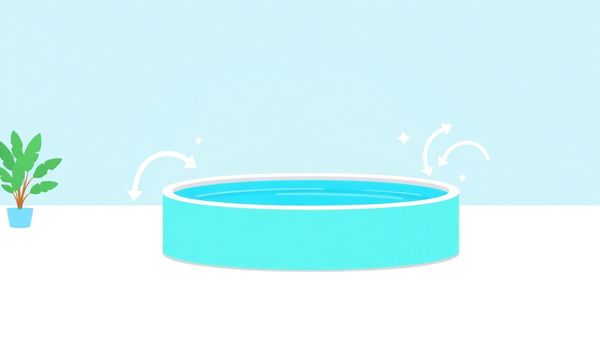
Air sneaking into your pool system can be as troublesome as a pesky mosquito that won’t let you enjoy a sunny afternoon. When air infiltrates, it disrupts the water flow and can lead to inefficient filtration or even damage the pump. To prevent such mischief, scrutinize the pump lid seal. If the O-ring appears brittle or cracked, it’s time for a replacement or some silicone-based lubrication. This small, circular rubber piece is your first line of defense against air intrusion.
Connections in your pool plumbing are like the links in a chain; any weakness can cause a break. Examine the unions and joints where your pump connects to the plumbing lines. Adding plumber’s tape to these spots can be an effective way to tighten them up and seal out unwanted air. A friend of mine once struggled with persistent air leaks until she discovered that a few turns of tape transformed her system's performance.
Moreover, keeping a keen eye on water levels is crucial. If the water dips below the skimmer, the risk of air entering skyrockets. Regularly check and adjust to maintain appropriate levels. Lastly, ensure your skimmer and pump baskets are free from debris, as blockages can reduce water flow and encourage air to slip in. A little diligence can keep your pool pump humming smoothly, ensuring crystal-clear waters that are ready for a refreshing dive any time.
Valves play a pivotal role in the smooth operation of your pool pump, acting as the gatekeepers of water flow. These humble components ensure that water moves seamlessly from your pool to the pump and ultimately through the filtration system. From my own experience with pool maintenance, understanding valve functionality can be a lifesaver, especially when troubleshooting those pesky flow issues.
To start, there are typically two main types of valves you’ll encounter: shut-off valves and three-way valves. A shut-off valve is straightforward, allowing you to stop the water flow completely - a handy feature when you need to perform maintenance without causing a flood. On the other hand, the three-way valve offers the flexibility of directing water from multiple sources, such as your skimmers or main drain, toward the pump. This type of valve is invaluable for customizing water flow to suit your pool’s unique needs, balancing the intake to maximize efficiency.
Regularly inspect these valves for any signs of wear or leaks. Over time, pool chemicals and environmental factors can degrade valve seals, potentially leading to air leaks that disrupt pump operation. Simply twisting a valve seems minor, yet it can make a world of difference in preventing air ingress, which might lead to pump cavitation or even damage. By keeping valves in top shape, you’re ensuring that your pool pump can continue its mission of maintaining crystal-clear water, much to the delight of every swimmer in your household.
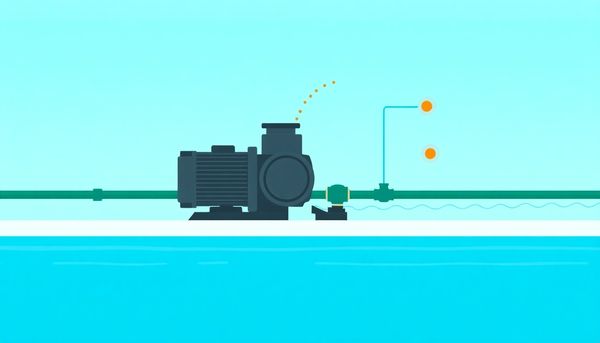
This article provided insights into maintaining your pool. Start your pool care journey today!
Want to become a pool maintenance expert? Our free Pool School course covers everything you need to know about pool care. From basic maintenance to advanced troubleshooting, you'll learn how to:
Join over 10,000 pool owners who have already transformed their pool care routine. Get started with our free Pool School course today!